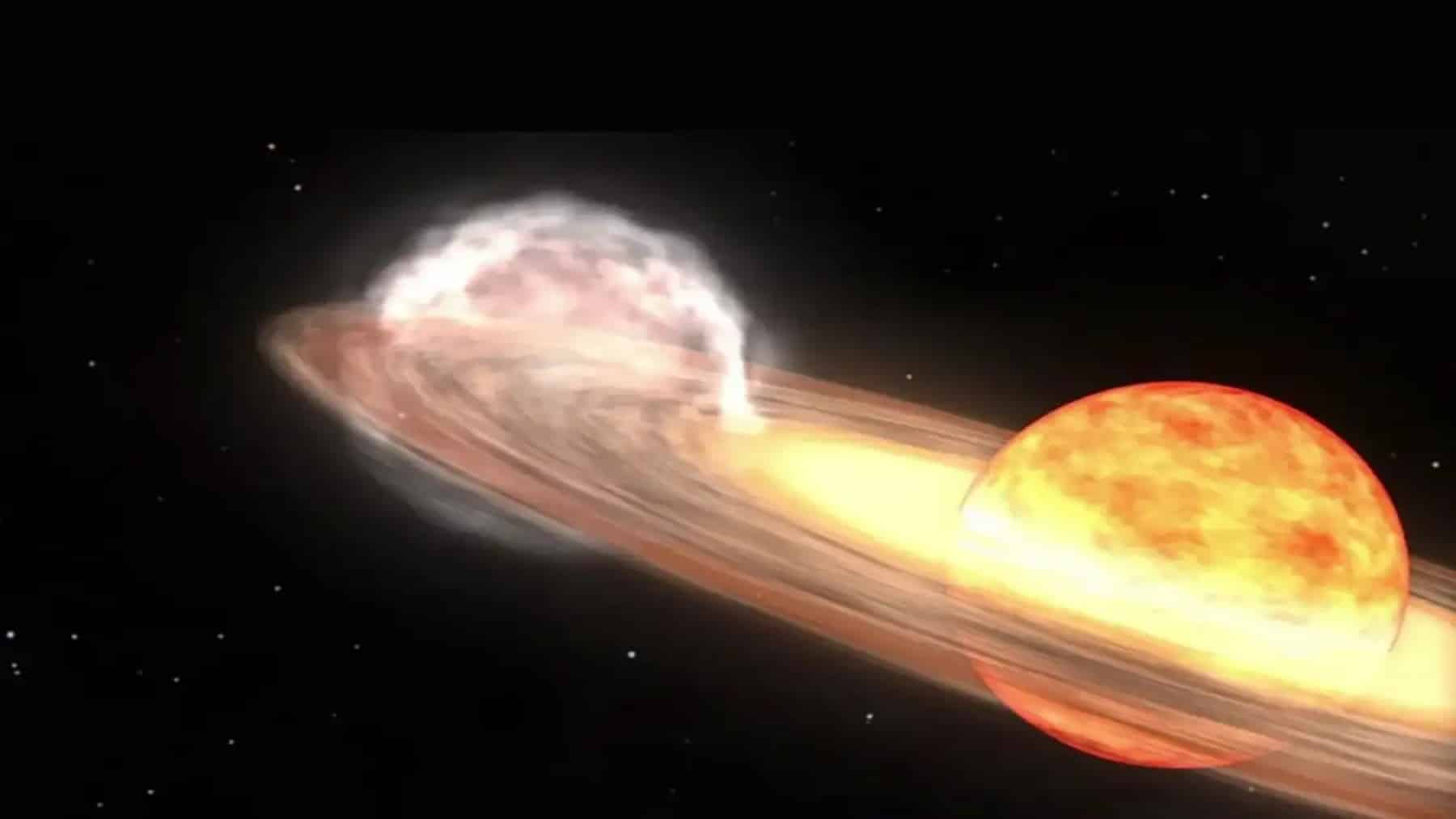From the beginning of time, our universe has been pulsated by many events, some are hushed in silence, others are loud as if from creation. These events occur as many cosmic entities communicate or collide with one another, like the star duet. Over time, they become repetitive and register as rhythms observed as patterns. NASA has observed one such pattern, and this article covers their discovery.
A stir in the stars: scientists uncover an impending cosmic event
Generally, when elements collide in space, they do send subtle signals like light or radio waves. This event, however, when scientists observed it, they thought it was a glitch, as no one expected it. But in the past few months, it has repeated itself, and now, NASA believes it to be a prelude to something rather extraordinary.
This event is discovered to be between two giant stars. Every day, people are born, and every day, people are reported dead. This cycle is one no one can bargain with and is apparently of universal dominance. Just like people, stars are born, developed, and witness death with a loud bang.
This religious death of a star is not a new event. But the death is predicted to be of two T Coronae Borealis (T CrB), which would be a historic event for every among two star duets. This research is observed by a team of astronomers led by Sumner Starrfield from the University of Arizona.
NASA predicts an explosive 80-year reawakening in space
Whenever a new star is born, scientists call it a nova, meaning new in Latin. The T CrB is made up of two star duets: a red, swollen giant with a molten surface appearance, and a small but dense white dwarf. As astronomers have observed over the years, stars are locked in collision with one another by gravitational forces, like this strange discovery around a baby star.
However, this inbound force appears to be more of a consuming obsession because the red giant has a perpetual habit of feeding its molten matter to the smaller dwarf. This causes the star to expel a brighter luminous appearance.
This T CrB is located 3000 light-years from our solar system. Every 80 years, the star duet from within would completely collide during orbit as the red giant feeds the white dwarf, until eventually the system experiences an extreme explosion.
Supernova or nova: What was the T CrB explosion?
Many of us are familiar with supernovas, probably because of how catchy it is to pronounce, but they register as the absolute death of a giant star. Although we said Novas accompany the birth of a new star, the reality says otherwise. Novas have a recurrent cycle of star duet, where a white dwarf explodes into a non-destructive explosion that simmers with time until it returns to its original state.
Confusion looms as scientists are unable to predict when this event will occur
The majority of the scientists working on this star duet research claim to have a limited understanding of how Novas work. Although this explosion would be much apparent and visible to every eye within our solar system, it is impossible to know if the explosion has an accompanying gas cloud, what gases it would expel, or when exactly it would occur.
NASA as an entity deals with the discovery of the unknown but incidents like the unusual star duets can sometimes leave even the most advanced agencies stunned. While its origin remains a mystery, its relieving to see that the majority of the agency’s scientists are dedicated to understanding how this rare cosmic event behaves and interact with other entities within the solar system, just like this billion-miles monster discovery breaking boundaries.
